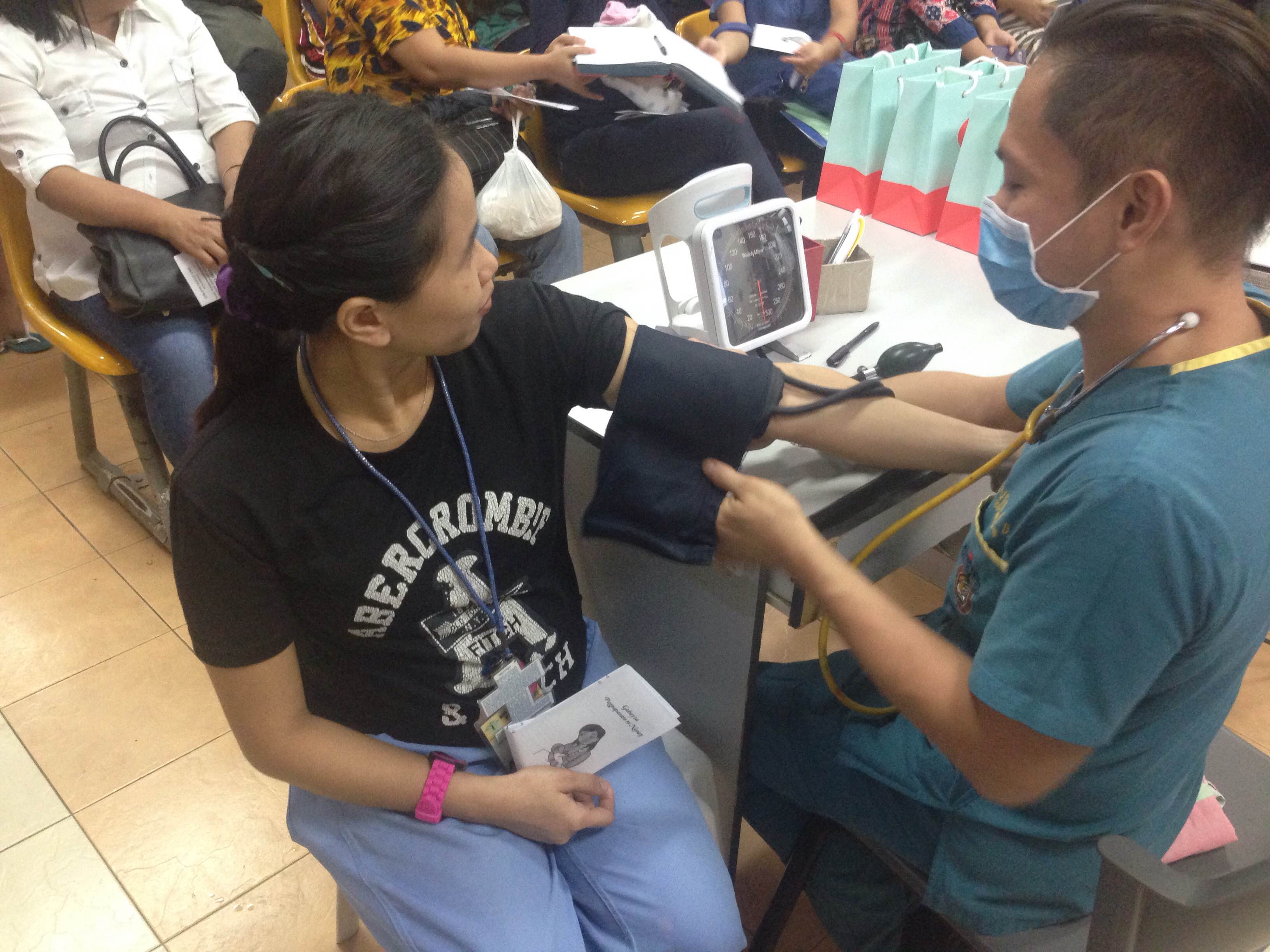
A nurse takes the blood pressure of a pregnant mother during her regular pre-natal check up at the Southern Philippines Medical Center in Davao City. The Department of Health says that a pregnant woman should have at least four prenatal visits throughout her pregnancy to ensure the health of the mother and the baby. (Zea Io Ming C. Capistrano/davaotoday.com)
DAVAO CITY — The City Health Office (CHO) sees the establishment of public lying-in centers in communities as a strategy to reduce maternal and infant mortality rate.
The CHO will soon open its sixth lying-in center in Bunawan district here. The other birthing facilities are located in Tibungco, Agdao, Marilog, Malabog, and Paquibato. The birthing centers in Tibungco and the Paquibato have their own ambulances to ferry patients to the Southern Philippines Medical Center (SPMC) in cases of emergencies. The Marilog facility, meanwhile, is linked with Central 911.
Dr. Josephine Villafuerte, chief of the CHO, said government-run lying-in centers “are very helpful in the campaign to lessen the threats of deaths of mothers and newborn babies.”
In 2014, infant mortality rate in Davao City was at 8.9 per 1,000 live births.
“The number slightly increased in 2015 to 9.5 per 1000 live births because of postnatal complications,” said Villafuerte.
Maternal mortality rate, however, significantly dipped from 85 per 100,000 live births in 2014 to 55 per 100,000 live births in 2015.
During the nutrition fair organized by the National Nutrition Council 11 last week, July 27, Davao del Sur Provincial Health Officer Dr. Azucena Dayanghirang said that a facility-based pregnancy and birth that is managed by skilled attendants are needed to ensure safe motherhood and maternal health.
The Department of Health’s MNCHN strategy manual states that: “Majority of maternal deaths directly result from pregnancy complications occurring during labor, delivery and the post-partum period.”
Complications include hypertension, post-partum hemorrhage, severe infections, and other medical problems which occurs because of poor birth spacing, maternal malnutrition, unsafe abortions and presence of concurrent infections like Tuberculosis, malaria and sexually transmitted infections. Lifestyle diseases such as diabetes and hypertension contribute to complications during pregnancy.
Meanwhile, the DOH said neonatal deaths within the first week of life “are often due to asphyxia, prematurity, severe infections, congenital anomalies, newborn tetanus, and other causes.”
It said that the direct causes of maternal and neonatal deaths “require care by skilled health professionals in well-equipped facilities.”
But the health department notes that “55 percent of births are delivered at home, of which 36 percent are attended to by Traditional Birth Attendants or hilots.”
“This contributes to the three delays that lead to maternal and neonatal deaths such as delay in identification of complications, delay in referral, and delay in the management of complications,” it said.
Based on the report of the National Economic Development Authority Region 11, Davao City is one of the two areas in the region that will likely achieve the Millennium Development Goal target to reduce infant mortality rate.
In 2005, the report said the infant mortality rate in Davao City declined from 15.7 in 2002 to 11.1 in 2005.
“We are expected to provide excellent health services to the public. For pregnant mothers and their children, our services are aimed at providing quality prenatal, newborn care, and other services that are needed to ensure that both mother and child are safe,” said Villafuerte.(davaotoday.com)








